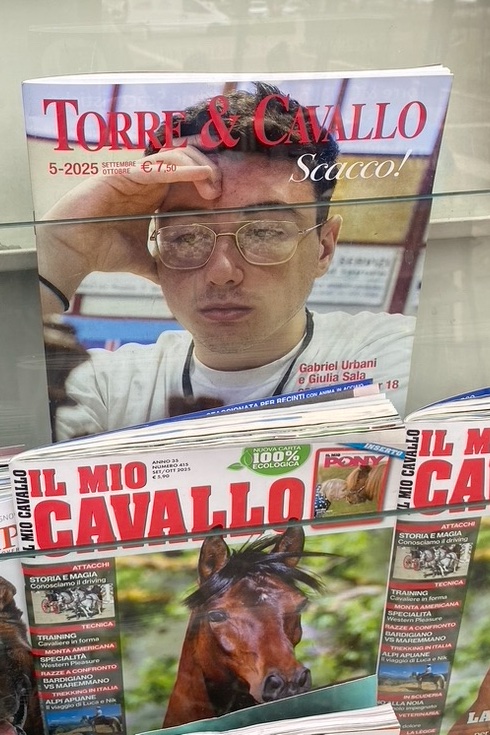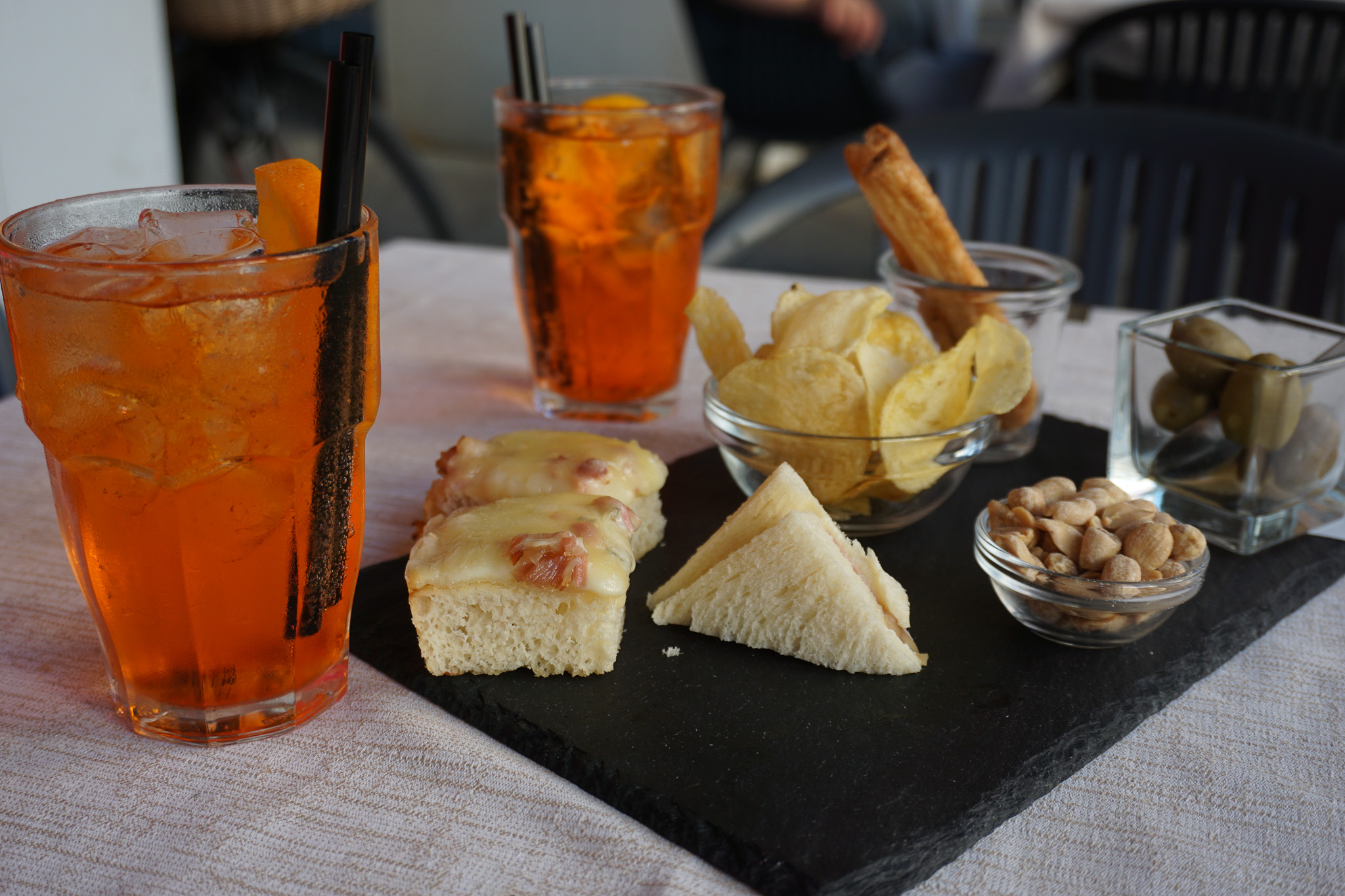Torre & Cavallo
Anyone who has ever been on holiday in Italy and visited a city there will recognise this sight.
Typical Italian newsstand
Given White‘s difficulty in proving an advantage in a series of Ruy Lopez systems, the Italian game (also known as Giuoco Piano), has become increasingly popular. In the systems based on an early d2-d3 (Giuoco Pianissimo), White aims at submitting their opponent to the same kind of positional pressure as “The Spanish torture”, a term used by Tartakower for describing the strategic fight in the Ruy Lopez.
On almost every square – whether in a big city or a small town – you will find such a newsstand (called edicola in Italian). These kiosks sell not only newspapers and magazines but also books, toys and other items.
It feels as though hundreds of different newspapers and magazines are sold at these kiosks. I have often looked for chess magazines there. But although I have frequently searched among the sports as well as puzzle and riddle magazines, I had never found a chess magazine.
On my last holiday in Italy, chance came to my aid. While unsuspectingly drinking an espresso with a view of such a kiosk, I looked at the magazine covers. My eye fell on this magazine.

Horse magazines in an edicola
The person shown on the top magazine looked very much like a chess player, so even with my very limited knowledge of Italian, I guessed it was a chess magazine. A quick internet search confirmed the assumption – it really is a chess magazine. Torre & Cavallo is the only regularly published chess magazine in the Italian language. Incidentally, during my search, I also learnt the following vocabulary.
| Scacco | Chess |
| Torre | Rook |
| Cavallo | Knight |
As you can see in the picture, the kiosk owner had filed the magazine among the horse magazines. I assume he did so because of the word Cavallo in the title. If other kiosk owners do the same, it is hardly surprising that I could not find the magazine in other kiosks.
I could not pass up such an opportunity and bought the magazine for €7.50. The issue has 60 pages and offers a good mixture of national and international tournament reports, as well as training tutorials (tactics, middlegame and endgame). I particularly appreciated the large number of photos and the depth of the game analyses. The analyses are often accompanied by diagrams, allowing you to follow them even without a board. By the way, the young man on the cover is Gabriel Urbani, who had just won the Italian Under-18 Championship.
Leafing through the magazine, I noticed that most opening names are easy to derive. Only the Italian name for the King’s Indian Defence surprised me.
| Siciliana | Sicilian |
| Gambetto di Donna | Queen’s Gambit |
| Gambetto di Re | King’s Gambit |
| Inglese | English |
| Italiana | Italian |
| Nimzo-Indiana | Nimzo-Indian |
| Est-Indiana | King’s Indian |
| Partita di Alfiere | Bishop’s Opening |
Incidentally, this also gives you the Italian names for the chess pieces. Only pedoni for pawns is missing, and you can recite the full set (re, donna, torre, alfiere, cavallo and pedoni) in Italian. With the adjectives bianco and nero you can also distinguish the white and black pieces.
In the age of AI, translating foreign-language articles is no longer difficult. For example, you can scan a page with your smartphone and have it translated by your AI agent of choice (Gemini, OpenAI, Perplexity, Claude, …). But it is more enjoyable to try managing without. Let’s test ourselves with the game Donchenko – Kiolbasa, analysed on page 6 of the magazine. After 9…g5 this position arose.
The Italian comment reads:
Il Nero accetta di aggredire immediatamente sull’ala di Re. Un piano rischioso ma dinamico che è stato usato in passato da top player.
I had to look up the following words:
| sull’ala | On the wing |
| piano | Plan (but can also mean slow) |
With this expanded vocabulary, it becomes clear that Black immediately (immediatamente) launches an attack (aggredire) on the kingside (sull’ala di Re). This plan (piano) is risky (rischioso) but dynamic (dinamico) and has been used in the past by top players.
Five moves later, Black played 14…Rg8, leading to this position:
The Italian comment reads:
Il Nero sposta la Torre, ma forse senza una chiara idea. Era piu prudente consolidarsi prima, ad esempio con 14… Df6.
I had to expand my vocabulary as follows:
| spostare | to move (e.g. a chess piece) |
This makes it clear that Black moved the rook without a clear idea (senza una chiara idea) and that it would have been more prudent (prudente) to consolidate (consolidarsi) first with a move such as 14…Qf6.
Anyone who would like to test how well they can understand the Italian comments can replay the entire game. I have included the comments from the magazine. And if you get stuck, you can always ask AI for help.
Now there should be nothing stopping you from buying a copy of Torre & Cavallo on your next holiday in Italy and reading it on one of the many beautiful piazzas. All that remains is to order a local refreshment – if accompanied, you might say “Vorrei due Aperol Spritz, per favore”. In that spirit: cheers, or as the Italians say, Cin cin!

Typical Italian aperitivos
In this video course, experts (Pelletier, Marin, Müller and Reeh) examine the games of Viktor Korchnoi. Let them show you which openings Korchnoi chose to play, where his strength in middlegames were, or how he outplayed his opponents in the endgame.
